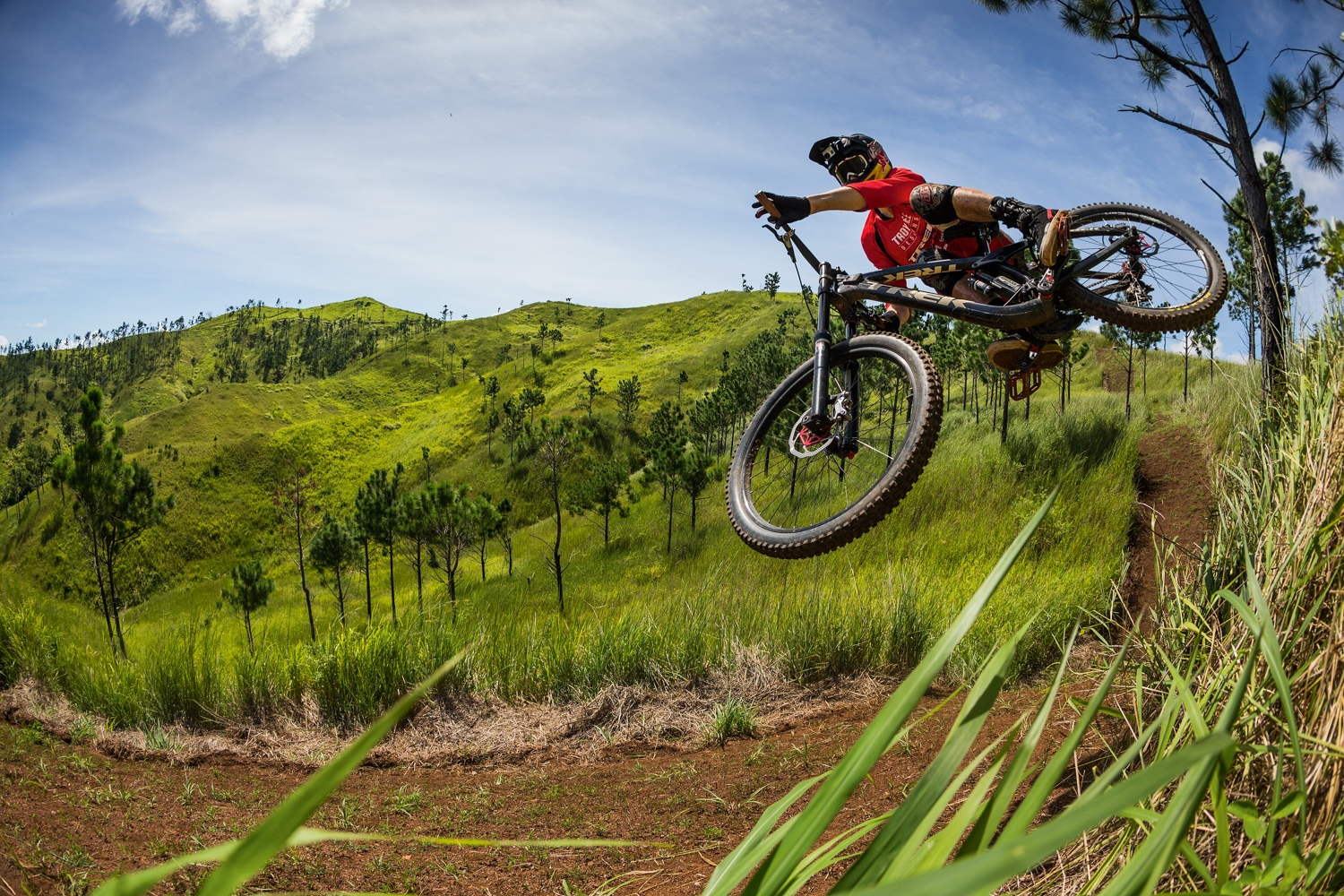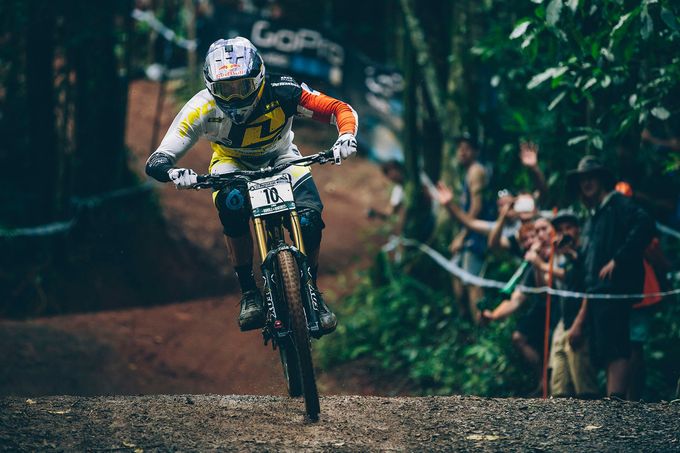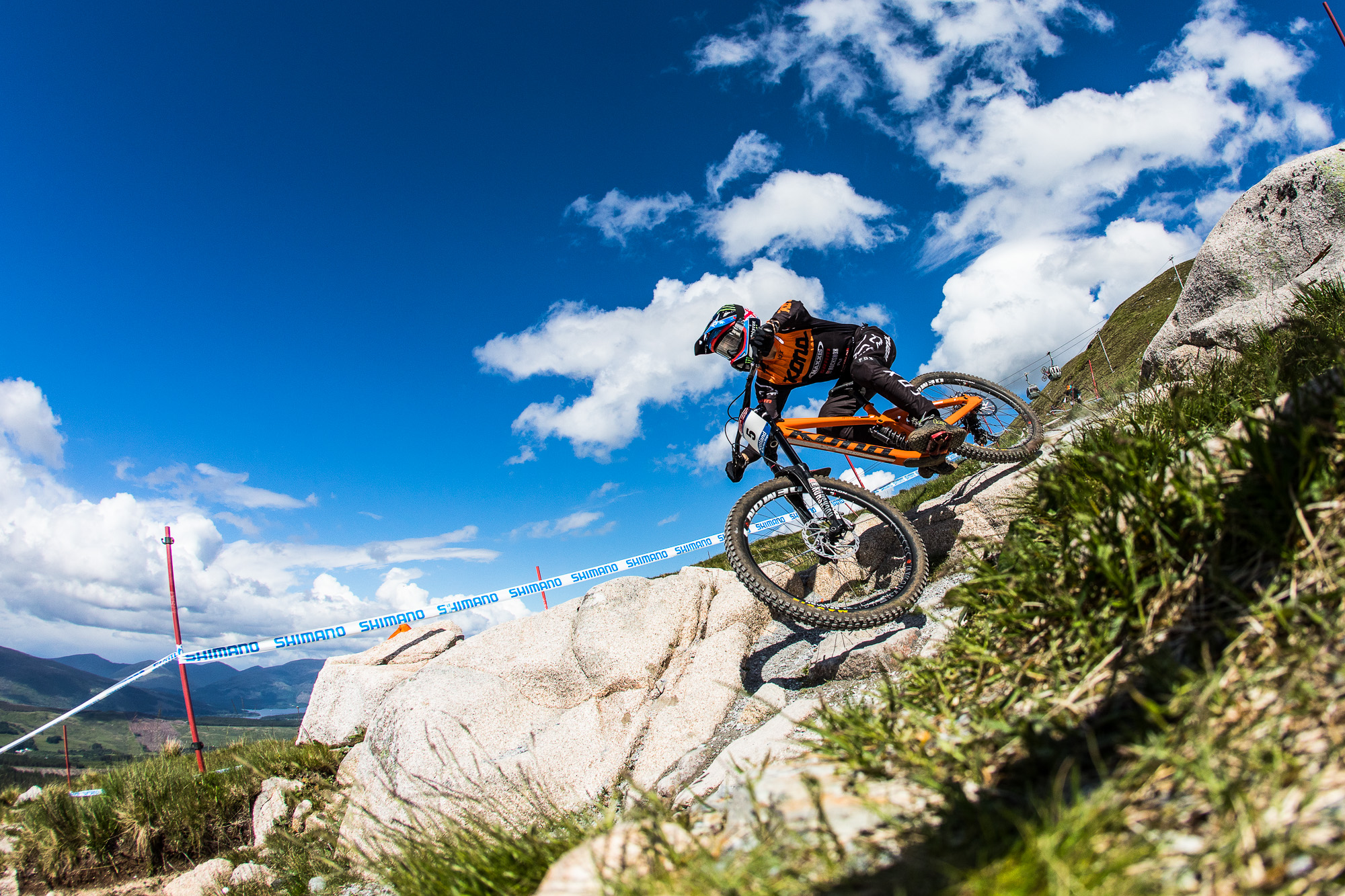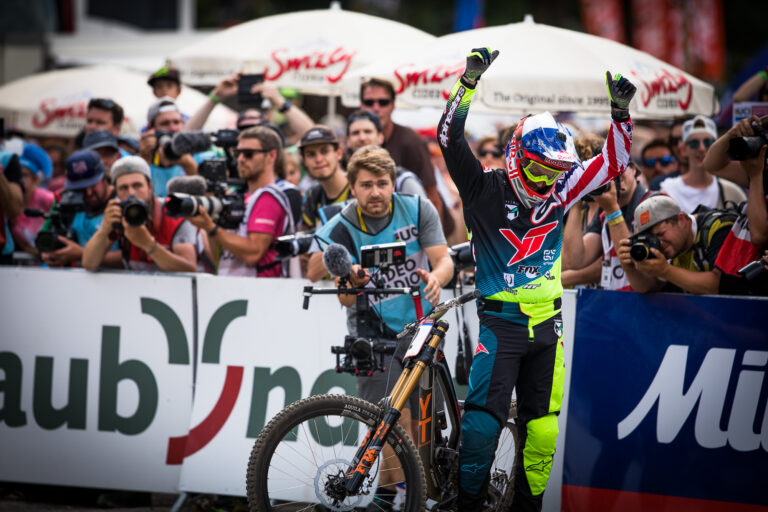With many of the worlds greatest racers currently drowning in media and being very vocal on the “undoubted fact” that 29” wheels are faster, many might well have forgotten the flat pedal downpour that pissed over everyone at the opening fort William event fifteen years ago.
FLATS – AN ENDANGERED SPECIES?
By Steven Jones
It seems everyone is now high and erudite on very old facts about wheels, 2017 will probably go down as the year of enlightenment no doubt. You must have 29 wheels and it seems you also must have clipped in shoes. But is this a fact or is it simply that everyone has followed each other? Gwin’s 27.5″ wheel victory at Leogang has certainly put a hose on the wheel theory so are we simply waiting for a rider to tear up the shoe theory too?

It seems not that long ago that the greatest win of all time took place at Fort William and only a few years ago that Hill won at Meribel world cup finals on flat pedals. So what’s happened to flat pedal racers? Are they an endangered species?
There is an unspoken and widely accepted rule of downhill is that entrapment is necessary to win races, that even the the untamed riders of World Cup downhill rely on a good snare to pilot themselves through the wild territories of racing.
















